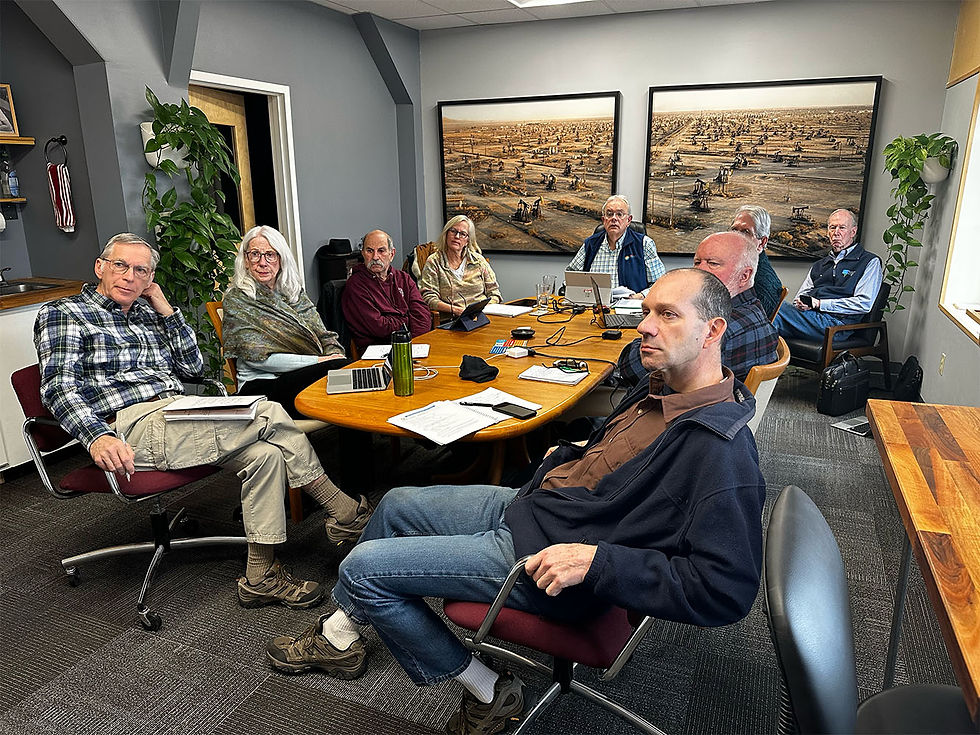Through the Oil Fields: A Tribute to the Dixon Ave Office
- Sep 28
- 2 min read
Updated: Oct 14

When visitors stepped into the Community Power Coalition of New Hampshire’s former office at 14 Dixon Avenue in Concord, many paused at the sight of two enormous landscape photographs dominating a conference room wall. Created by renowned photographer Edward Burtynsky, the images depicted oil fields at dawn — vast stretches of black derricks and jack pumps casting long shadows across the California desert.
The photos were striking — and provocative.
“Don’t you work in clean energy?” some asked, surprised by the intensity of the industrial scene above the meeting table. The question underscored the tension at the heart of the display — and the reason the images were there in the first place.
“I like that they provoke some kind of feeling, reaction, discussion out of people,” says Herndon. “They make me think about the great American Century, the industrial revolution, our ongoing transformation into the modern world.”

Far from being out of place, the Burtynsky images offered a compelling visual counterpoint to CPCNH’s mission. They reminded all who passed through the office that our energy system is constantly evolving and part of a longer history — one built on earlier forms of power and shaped by the infrastructure of the past.
The photographs were part of a larger collection assembled over six decades by Terry and Eva Herndon, Henry Herndon’s grandparents. The collection focused on American artworks tied to the automobile and energy — and how these themes shape American landscapes, infrastructure, politics, and culture — themes that Burtynsky’s oil fields explore with both scale and detail.
Each image stands nearly floor-to-ceiling, and depending on the time of day, they appeared alternately serene or intense. The interplay of light and machinery in the photos reflected the evolving nature of energy systems — once dominated by fossil fuels, and now increasingly defined by innovation in renewables and local control.
For CPCNH, the oil fields served as more than decoration. They became a quiet but resonant reminder of where we’ve been, and a prompt to consider the possibilities of what comes next.
In September 2025, CPCNH moved out of the Dixon Ave office, closing a chapter in its early organizational history. Though the Burtynsky photographs no longer hang above the conference table, their presence endures. They told a story not just about energy, but about vision, transformation, and progress — themes that continue to shape the Coalition’s work across New Hampshire.





Comments